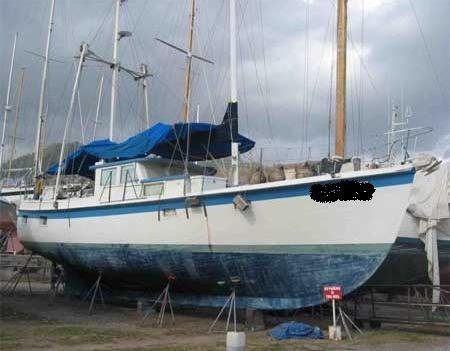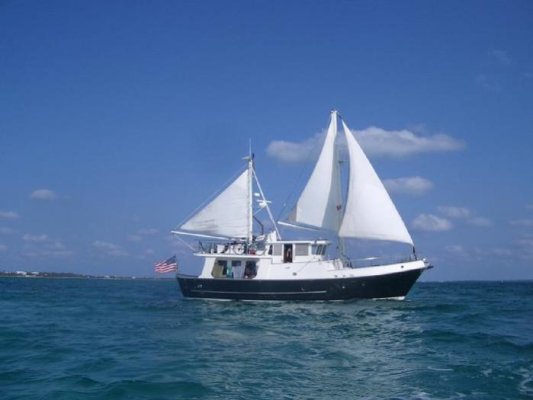Maybe I should explain a little more, my current thoughts are a 45 - 55 foot trawler (only) No SV no experience! The kinda input preferred is Manufacturer of the boats and perhaps the specific model ie canoe back an perhaps best years made! Delfin you bring up some great points 1 question how did you come to 4000 mile capacity? Phil Fill to add to my explanation Imy plan is to stay some what local (Bahamas north to Canada) till my skill level and comfort level points me further out in addition the crew will be my wife and myself my mechanical prowess is alright and would under take any required repairs but if help is nearby would probably enlist them. Are you saying any body who did their circumnavigating under 60 is lucky to have returned or is there that much more skill in picking weather opportunities
Looking foward to the responces
Gregg
The reason for the range is because you mentioned circumnavigation. If you check the distances between landfalls in the Pacific you'll see why range like that is pretty desirable. Just because there is a landfall, it doesn't mean that fuel is available for a reasonable price, and just because a straight line can be drawn between two points doesn't mean you will want to travel that route.
I would list stabilization as an essential for the same reason Beebe did. Without it, ocean travel can be exceedingly uncomfortable, with food preparation or even moving around the boat underway becoming a potentially dangerous but always tiring event. For an example, consider the 1979 Fastnet race that experienced a force 10 storm. A number of vessels were dis-masted and a number of lives lost by people who would rather step onto a life raft in the Atlantic in a storm than stay onboard what was essentially now a very well ballasted trawler. Granted, they were stationary, but possible death looked better to them than staying on those boats. As a result, many died.
Beyond a sea worthy hull, stabilization, good mechanics and fuel capacity most everything else is a design feature that may increase the safety margin or comfort, but may not be essential to the task. A canoe stern is nice, but not essential. If you look at Delfin's profile you'll see the pilot house overhangs the deck, which is a feature that breaks the energy of boarding waves. Nice, but not essential. Off the top of my head, I would rank the characteristics of a circumnavigator in descending order of importance to be:
1. Sound, stable, efficient and strong hull that is less stable upside down than right side up.
2. Sound mechanicals not more complex than the mechanical skills of the captain
3. Stabilization
4. Range
5. High bulwarks
6. Battery capacity
7. Watermaker
8. Canoe stern
9. Refrigeration that doesn't suck the batteries dry in 12 hours
10. Good ventilation in the tropics
This is just a list of personal preferences that many would reorder but they are mine. Tad Roberts, our resident NA could provide a more definitive and informed list.
Regarding specific designs you're really talking budget, but pound for pound and dollar for dollar I like Norhavn 46's, who have proven themselves many times to be very satisfactory blue water boats.


 There are shipping companies that speciallize in shipping boats around the world.
There are shipping companies that speciallize in shipping boats around the world.



 Why didn't I think of that? Thanks Hollywood!
Why didn't I think of that? Thanks Hollywood!